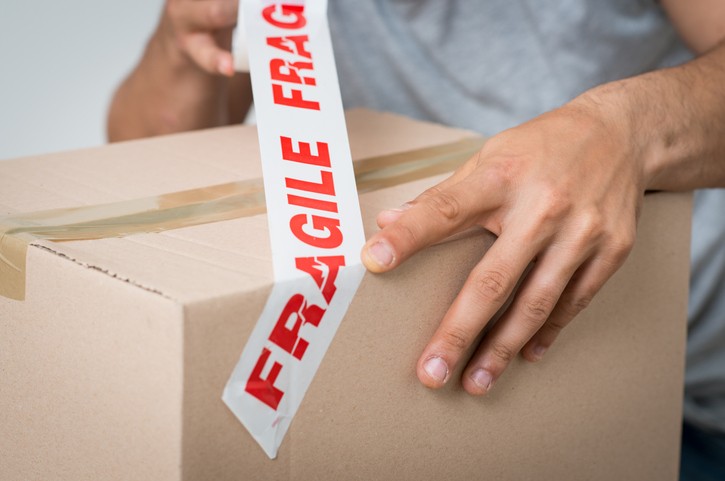What Your Need to Know Before Shipping Frozen Food
Shipping frozen food can come with a huge amount of obstacles.
If you’ve caught the perfect fish off the coast on vacation, or have fallen in love with a particular cheese far from home, it can be a huge difficulty to get these items home safe. The United States Postal Service and most mail carriers are aware of these troubles and will take no blame: customers can ship perishable goods at their own risk. There’s no promise that those items will still be edible on the other side of the journey.
Just because it’s difficult, though, doesn’t mean that shipping frozen food is impossible. With the proper preparation and precautions taken, you can get your items home safe and in one piece.
Read on, and we’ll walk you through everything you need to know about mailing frozen food.
Pick The Proper Packaging
A standard cardboard box won’t cut it when it comes to mailing frozen food items. Cardboard doesn’t have the insulation required to keep your items from thawing. No matter what you do, there’s just no way to make a cardboard box work.
Most shippers do provide an option for cold shipping boxes. These are typically insulated coolers that then fit inside of cardboard boxes. In addition to these containers, usually either dry ice or gel ice packs are loaded in alongside the items. If your item is truly frozen and needs to remain ice cold, you’ll probably opt for the ice pack. If it needs to stay at a refrigerator level of cool, the gel packs are probably the way to go.
Styrofoam lining and insulated bubble wrap liners are also used frequently when packing to help insulate the package.
Checking the packaging of the food itself is vital when packing. Any leaks from the ice packs have the potential to damage food if not protected and packaged properly. Dry ice is usually wrapped in newspaper and placed at the bottom of the cold shipping containers. Then the frozen goods are placed on top, and another layer of dry ice is placed above them.
Working With Dry Ice
If you’re handling dry ice yourself, make sure to use gloves and protect yourself. Dry ice is so cold that it has the potential to cause skin damage if direct contact is made. Also make sure to note how many pounds of dry ice you include in the package, as all shipping carrier will want to know.
The amount of dry ice needed will depend on the size and weight of your food product. You’ll need to also consider the required temperature for your product, and the climate and season of your destination. You can reference this information to see how much dry ice you might need depending on your particular situation.
You should also check with your shipping carrier ahead of time to make sure that they don’t have specific requirements when it comes to packaging frozen food. Some shippers will not accept dry ice packages without ventilation, for example. Writing DRY ICE on the outside of your box and specifying the dry ice weight can be a huge help in getting your package through.
Preparing Your Frozen Food Items
In an increasingly globalized world, the need to ship frozen or refrigerated items is more and more vital.
The proper care must be taken in getting these frozen items ready to ship. The most essential thing is that you keep these items chilled and frozen until the last possible moment. Even with the best possible shipping set up, you want to keep the time your food is in the shipping container as small as possible.
This means picking the fastest possible shipping is also highly advisable. Dry ice can last a few days, but if you’re shipping your items a far distance, it can get quickly expensive to get your items home in time without a big expense.
Timing your shipment properly is also essential to the health and upkeep of your frozen food items. Be aware of all factors that might delay your package’s arrival, including holidays. Make sure that your package will be able to be directly received when it arrives at your intended location. Having it sit on your front step for hours, or get turned back around to the holding station, will not bode well for the food inside.
If you’re shipping something home that might beat you there, consider shipping instead to a trusted friend or family member. They can receive and store the food item in their freezer, and you can quickly transfer it once you arrive back from your trip.
How To Save Money Shipping Frozen Food
There are a few things to take into consideration when it comes to getting the best bang for your buck when shipping.
One thing you can do is design your packaging to be as compact as possible. Most shipping companies set prices based on the size of the package being shipped. While the weight is a big factor, don’t underestimate how much companies rely on dimensions for their estimates.
You still may find that you have a hefty shipping cost to consider. If you’re planning on selling the goods you are shipping, consider including some of the shipping cost in your pricing. Even a little increase in price can make a huge difference in covering the costs of your shipping, especially if customers tend to buy in bulk.
How To Ship Frozen Food
Shipping frozen food items can be a challenge. But with the proper steps taken, it doesn’t have to be stressful or expensive. In fact, it can be easy. If you follow the tips outlined above, your frozen food will be off and well on its way, safe and sound for its eventual arrival.
Need more shipping advice, tips, or tricks? Check out our blog for more information.





